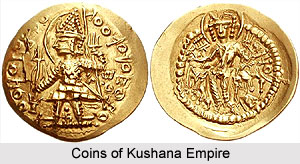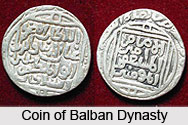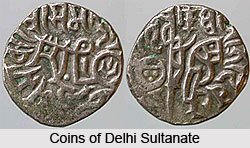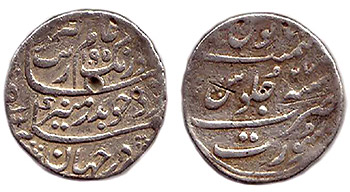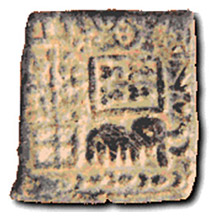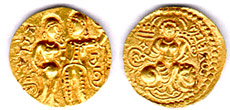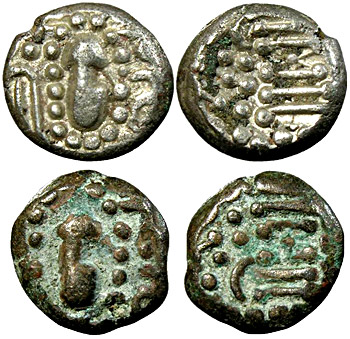 Gadhaiya coins of Gujarat are well-known in numismatic literature. However, the use of the appellation varies from writer to writer. The characteristic of the coins is a very degenerate fabric in which the Indo-Sassanian elements are virtually absent: on obverse, a vestigial head which in its latest form resembles a spade or footprint; on reverse a series of lines and dots. The Gadhaiya coins of Gujarat, increasingly degenerate imitations of the Hun imitations of the Sassanian coins, were likely released during the Chavada (AD 746-942), the Chalukya (AD 942-1243), and Vaghela (AD 1244-1297) dynasties of Gujarat. They continued to be the accepted coin of the realm till the conquest of Ala-ud-din Khilji of the province at the close of the 13th century.
Gadhaiya coins of Gujarat are well-known in numismatic literature. However, the use of the appellation varies from writer to writer. The characteristic of the coins is a very degenerate fabric in which the Indo-Sassanian elements are virtually absent: on obverse, a vestigial head which in its latest form resembles a spade or footprint; on reverse a series of lines and dots. The Gadhaiya coins of Gujarat, increasingly degenerate imitations of the Hun imitations of the Sassanian coins, were likely released during the Chavada (AD 746-942), the Chalukya (AD 942-1243), and Vaghela (AD 1244-1297) dynasties of Gujarat. They continued to be the accepted coin of the realm till the conquest of Ala-ud-din Khilji of the province at the close of the 13th century.
Metrology of Gadhaiya Coins of Gujarat
Gadhaiya coins of Gujarat are narrower and thicker in appearance. The continuity of the main design features is visible throughout, although increasingly stylised: obverse, failure of king to right; reverse, fire altar at centre flanked by female attendants. The progressive alteration of the motifs was not a descent into crudity. Further, in some coins in particular, a finely detailed abstract design with very pleasing symmetrical composition and aesthetic execution can be seen. From the twentieth century perspective the visual quality of the Gadhaiya coin of Gujarat was fairly sophisticated. However, with time, a lapse in the standards of design and manufacture was also observed. The weight standard of these coins is difficult to determine with any precision, since the coins circulated for such a long period that they are extremely worn in most hoards. It will be remarked that when the coins are divided into three groups based on the diameter of the flan, the mean weight of each group is inversely proportionate to the diameter. Coins of the same mass have a greater surface area, and hence greater tendency to lose mass through surface abrasion, when their diameter to thickness ratio increases. Conversely, they have a lesser surface area, and fewer tendencies to lose mass through surface abrasion, when their diameter to thickness ratio decreases.
Hence in all Gadhaiya coins samples, the latest coins present, in addition to being the youngest and least circulated, will show the least effects of wear due to their geometry. Thus samples composed of a mix of earlier and later Gadhaiya coins show a skew, and the older coins appear unduly light in comparison with the ideal minting weight standard of the latest coins present.
The area of circulation of the Gadhaiya coins was almost exactly congruent with the range of circulation of the Paruttha Drammas.
